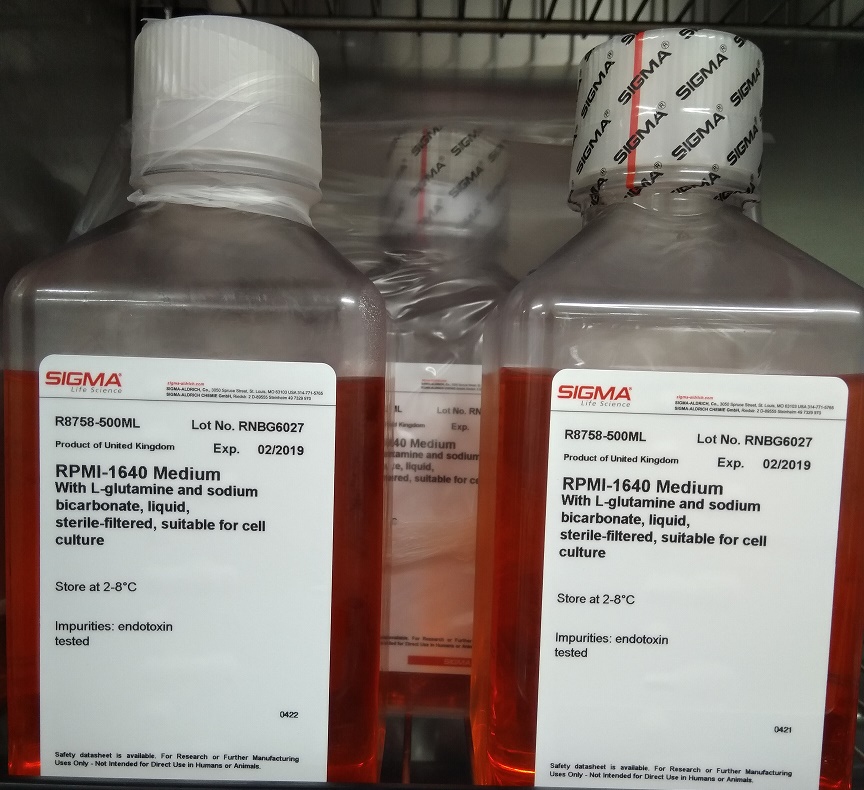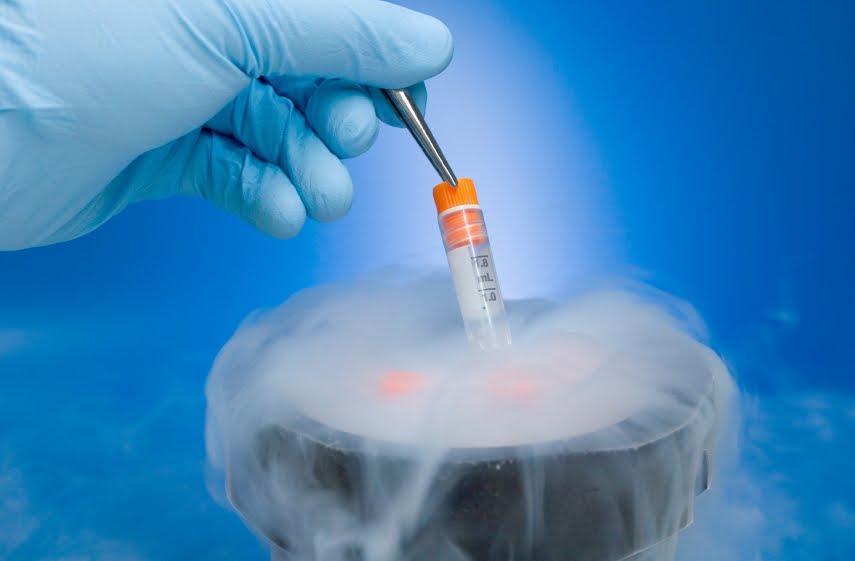Cell or tissue culture experimentations should not be carried out in the regular laboratory space where other laboratory investigations are undertaken. This is critical to avoid contamination of cells in the cell culture plates and also to ensure that all the physiochemical environmental factors that encourage optimal growth of the cells are provided. Thus, cell culture experimentations should be carried out in a specialized laboratory or an area in the regular laboratory that is secluded from the usual laboratory area in order to achieve optimal result. Some key environmental conditions (i.e. the physiochemical or physico-chemical environmental growth factors) must be met in order to achieve optimum cell/tissue culture technique.
The microenvironment in which cell culture technique is basically carried out is unique and quite different from the traditional microbial cultures that also occur in vitro in the sense that tissue culture support the growth of “living cells or cultures” derived from their parent cells. Such cells are manipulated and grown in such a way that they mimic the actual natural environment of the host organism from which these cells or tissues where extracted from. Therefore, it is critical that certain physiochemical and environmental factors including temperature, oxygen, pressure and CO2 of the growth medium (i.e. the cell culture growth medium) is performing at optimal levels that allow these cells to be manipulated in vitro.
Controlling these physiochemical environmental factors (even though they may not always be defined in most cell culture techniques) at an equilibrium state is vital to the unperturbed growth of the cells. The growth nutrients for the cells in the culture also provide some supplements such as serum that contribute to the optimal growth of the cells or tissue in the culture.
EFFECT OF TEMPERATURE ON CELL CULTURE
The temperature condition of tissue culture varies with the site of extraction of the cells i.e. the temperature of the actual body site the cells or tissues was extracted or obtained from. It is vital to always ensure that the extracted cells are cultivated in vitro while maintaining the original body temperature of the animal or body site of the animal from which the cells was originally extracted from. This is critical in cell culture techniques because the body temperature of an animal varies from one site of the body to another. For example, the temperature of the scrotal area (i.e. the scrotum that harbours the testes) which is covered is quite different from the temperature of the skin which is rationally exposed to the atmosphere. However, most cell culture techniques especially those that has to do with the in vitro cultivation of cells obtained directly from animals are mainly carried out at 37oC since the normal body temperature of animals inclusive of humans is around this range. The temperature range for cell culture should be optimally maintained. The CO2 humidified incubator used for incubating cell culture plates should not be under-heated or overheated during incubation as this may affect the growth of the cultured cells and other physiochemical factors. The spatial distribution of cell culture flasks in the CO2 humidified incubator in such a way that they are not overcrowded is critical because this practice ensures that the air within the incubator is evenly distributed and that temperature is maintained at ambient or optimal levels for the growth of the cells.
EFFECT OF HUMIDITY ON CELL CULTURE
Humidity is moistness or wetness of the air. It gives an estimate of the amount of water in the atmosphere. Humidity is a critical physiochemical factor considered for cell culture techniques. The incubator used for cell culture techniques is humidified in nature. This implies that the incubator maintains temperature levels that ensures optimum wetness or moisture level required for the growth of the cultured cells or tissues. Cells or tissues in cell culture plates or flasks require high humidity for growth but the humid level of the incubator should be controlled to avoid the growth of fungi within the CO2 humidified incubator. To avoid fungal contamination of the incubator, such humidified incubators should be routinely cleaned using disinfectants especially those that are antifungal in action.
EFFECT OF GAS ON CELL CULTURE
Gases inclusive of oxygen (O2) and carbondioxide (CO2) are critical for the optimal growth of cells in cell culture plates or flasks. The oxygen requirement for cell culture techniques varies across the different types of cells or tissues to be cultured even though most of the cells require O2 in vivo for their respiratory activities. Optimal O2-tension levels are critical for growth. Due to the difficulty experienced in the diffusion of O2 through the cell culture medium it is important that sustainable measures (e.g. the use of O2 packs or O2 carriers) be employed to ensure that the optimal amount of O2 required for the growth of the cells or tissues in culture is provided. CO2 tension is another critical physiochemical factor of the gas-phase of tissue culture that must be considered when contemplating cell culture experimentations. The CO2 is mainly generated from the cell culture medium especially from its sodium bicarbonate (NaHCO3) component and even from atmospheric CO2. The CO2 tension level should be maintained at optimal levels. The caps of some cell culture flasks or bottles are vented and have holes which allow excess CO2 generated within the vessel to escape while others are not vented and have no holes on their caps so that excess CO2 generated within the CO2 humidified incubator does not infiltrate into the cell culture flask or bottle. The regulation of CO2 in this manner helps to regulate the pH of the cell culture medium for the optimal growth of the cells or tissues of interest.
EFFECT OF PRESSURE ON CELL CULTURE
The osmotic pressure of cell culture flasks is usually measured using a special piece of equipment or instrument known as the osmometer. Cells or tissues cultured in vitro via cell culture techniques should be cultivated at optimal osmotic pressure tension levels in order to ensure that the osmotic pressure in the growth environment mimics that of the site or organism from which the cells were originally extracted from. The addition of extra growth nutrients (e.g. serum) and other substances into the growth or cell culture flasks should be optimally and cautiously done because these factors may affect and destabilize the normal osmotic pressure of the cell culture process. And this is not too good for optimal performance of the cells or tissues in the cell culture flasks.
EFFECT OF NUTRIENTS ON CELL CULTURE
Dulbecco’s Modified Eagle’s Medium (DMEM) is a commonly used cell culture medium for a variety of cell/tissue culture techniques. Another type of medium for cell culture experiment is RPMI-1640 medium – which (Figure 1). RPMI is an acronym for Rosswell Park Memorial Institute. RPMI 1640 Medium was originally developed to culture human leukemic cells in suspension and as a monolayer. Roswell Park Memorial Institute (RPMI) 1640 Medium has since been found suitable for a variety of mammalian cells, including HeLa, Jurkat, MCF-7, PC12, PBMC, astrocytes, and carcinomas. This medium contains vital nutrients and/or growth factors that support the optimal growth of cells or tissues in cell cultures. DMEM is a basal or general purpose medium used for most cell/tissue culture techniques. It can also be supplemented with other nutritional components such as amino acids, vitamins, serum, glucose, hormones and proteins in order to improve its quality. Antibiotics, lipids, minerals, organic and inorganic substances are other components that can be included to a basal cell culture medium to increase its nutritional base. The addition of these extra growth nutrients makes the media a complex cell culture medium.

EFFECT OF PH ON CELL CULTURE
The hydrogen ion concentration (pH) of a cell culture medium varies according to the type of cells or tissues to be cultured in vitro. However, some cells haveoptimal pH level in the range of 5.5 – 7.4 and even up to 7.8 in some cases. To maintain an optimal physiological pH level required for the successful in vitro cultivation of particular cells or tissues using cell culture techniques, it is critical to ensure the appropriate buffering of the culture media through the removal, adjustment and/or addition of materials and other factors within the growth media that will help to ensure a balanced pH level for growth.
References
Alberts B, Bray D, Johnson A, Lewis J, Raff M, Roberts K andWalter P (1998). Essential Cell Biology: An Introduction to the Molecular Biology of the Cell. Third edition. Garland Publishing Inc., New York.
Alberts B, Bray D, Lewis J, Raff M, Roberts K and Watson J.D (2002). The molecular Biology of the Cell. Fourth edition. New York, Garland, USA.
Ausubel, F.M., Brent, R., Kingston, R.E., Moore, D.D., Seidman, J.G., Smith, J.A., Struhl, K., eds (2002). Short Protocols in Molecular Biology, 5th edn. John Wiley & Sons, New York.
Caputo J.L (1996). Safety Procedures. In: Freshney, R.I., Freshney, M.G., eds., Culture of Immortalized Cells. New York, Wiley-Liss, Pp. 25-51.
Cooper G.M and Hausman R.E (2004). The cell: A Molecular Approach. Third edition. ASM Press.
Davis J.M (2002). Basic Cell Culture, A Practical Approach. Oxford University Press, Oxford, UK.
Freshney R.I (2005). Culture of Animal Cells, a Manual of Basic Technique, 5th Ed. Hoboken NJ, John Wiley and Sons Publishers.
Health Services Advisory Committee (HSAC) (2003). Safe Working and the Prevention of Infection in Clinical Laboratories. HSE Books: Sudbury
Lodish H, Berk A, Matsudaira P, Kaiser C.A, Kreiger M, Scott M.P, Zipursky S.L and Darnell J (2004). Molecular Cell Biology. Fifth edition. Scientific American Books, Freeman, New York, USA.
Marcovic O and Marcovic N (1998). Cell cross-contamination in cell cultures: the silent and neglected danger. In Vitro Cell Dev Biol. 34:108.
Mather J and Barnes D (1998). Animal cell culture methods, Methods in cell biology. 2rd eds, Academic press, San Diego.
Verma P.S and Agarwal V.K (2011). Cytology: Cell Biology and Molecular Biology. Fourth edition. S. Chand and Company Ltd, Ram Nagar, New Delhi, India.
Discover more from Microbiology Class
Subscribe to get the latest posts sent to your email.





